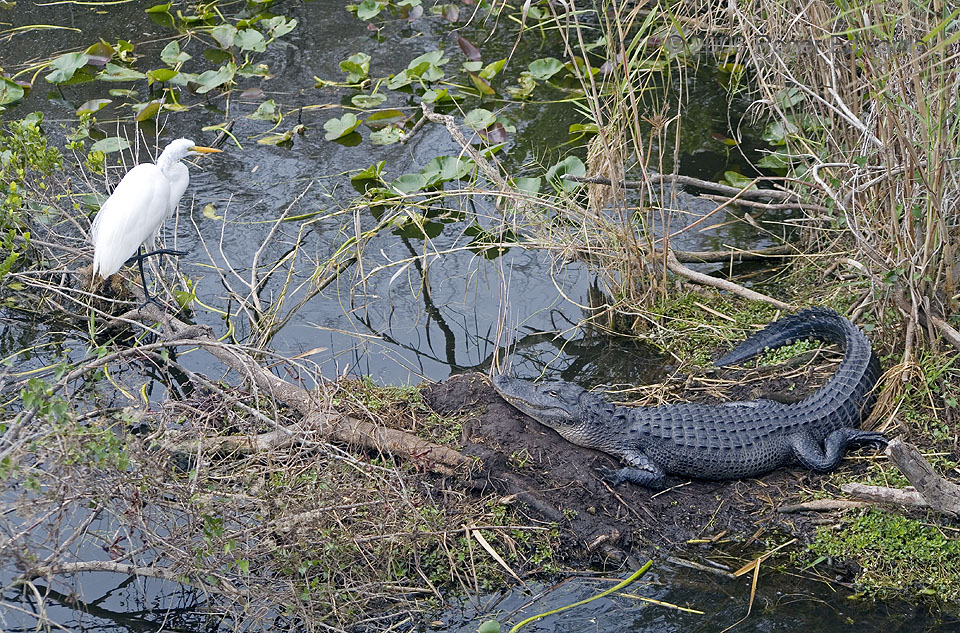The broad, moist plain known as the Everglades supports a mixture of tropical and midlatitude wildlife unmatched elsewhere in the world. That includes this egret and alligator, eyes fixated on each other as a meal and a menace, respectively. This uneasy balance between predator and prey makes a good metaphor for that between vitality and utility across all the glades. It depends on the slow flow of water southward through the sawgrass and around the “hammocks”—forested islands of somewhat drier land just inches higher than the prevailing marsh. Although unlikely ever to match the original volume on a consistent basis, the slow creep of a great sheet of water from Lake Okeechobee to Florida Bay is being restored bit by bit, even as South Florida’s geologic plumbing system continues to serve the more than five million people on its east edge. The ultimate challenge will be in reaching a balance beneficial to—or at least tolerable by—all involved.
9 SW Florida City FL (8 Dec 6) Looking NW
25.3827, -80.6056
